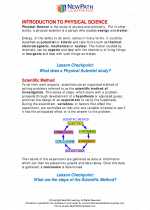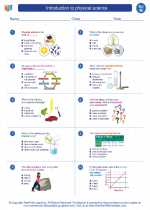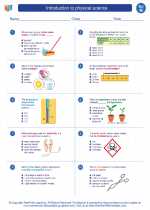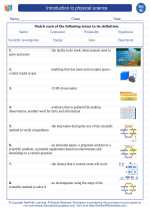Photon
A photon is a fundamental particle that represents the smallest discrete amount of electromagnetic radiation, including visible light. It is a type of elementary particle, the quantum of the electromagnetic field including electromagnetic radiation such as light, and the force carrier for the electromagnetic force. The concept of a photon was introduced by Albert Einstein in 1905, and since then, it has remained a central concept in physics.
Properties of Photons
- Wave-Particle Duality: Photons exhibit both wave-like and particle-like properties. They can behave as a wave and exhibit interference and diffraction, while also behaving as discrete particles with quantized energy.
- Massless: Photons are considered to be massless particles, which means they do not have rest mass. This property allows them to travel at the speed of light in a vacuum.
- Energy and Momentum: The energy (E) of a photon is directly proportional to its frequency (f) according to the equation E = hf, where h is Planck's constant. Photons also carry momentum, and their momentum (p) is given by p = E/c, where c is the speed of light.
- Quantization: Photons are quantized, meaning their energy levels are restricted to discrete values. This quantization is a fundamental aspect of quantum mechanics.
- Polarization: Photons can be polarized, which means their electric and magnetic fields oscillate in specific orientations perpendicular to the direction of their propagation.
Behavior of Photons
Photons exhibit various behaviors depending on the interaction they undergo:
- Emission and Absorption: Photons are emitted and absorbed when an electron transitions between energy levels in an atom. This forms the basis of spectroscopy and the interaction of light with matter.
- Scattering: Photons can scatter off particles, leading to phenomena such as Rayleigh scattering, which explains the blue color of the sky, and Compton scattering, which demonstrates the particle-like nature of photons.
- Wave-Particle Duality: As mentioned earlier, photons can exhibit both wave-like and particle-like behaviors, allowing them to interfere with each other or with themselves in the double-slit experiment.
- Photoelectric Effect: This phenomenon involves the ejection of electrons from a material when it is exposed to light. The photoelectric effect was one of the key pieces of evidence supporting the quantization of light and the particle nature of photons.
Applications of Photons
Photons and their interactions have numerous practical applications across various fields:
- Optical Communication: Photons are used in optical fibers for high-speed communication, enabling the transmission of data through the modulation of light.
- Photovoltaic Cells: Solar cells utilize the photoelectric effect to convert photons from sunlight into electrical energy.
- Medical Imaging: Techniques such as X-ray imaging and magnetic resonance imaging (MRI) rely on the interaction of photons with matter to produce diagnostic images.
- Quantum Computing: Photons are being explored as qubits in quantum computing, leveraging their properties to perform quantum information processing tasks.
Study Guide
To understand photons thoroughly, it is essential to grasp the following concepts:
- The electromagnetic spectrum and the relationship between photon energy and frequency.
- Wave-particle duality and the experimental evidence supporting this phenomenon.
- The photoelectric effect and its role in validating the particle nature of photons.
- The behavior of photons in different mediums and their interactions with matter.
- The practical applications of photons in technologies such as lasers, solar cells, and imaging devices.





